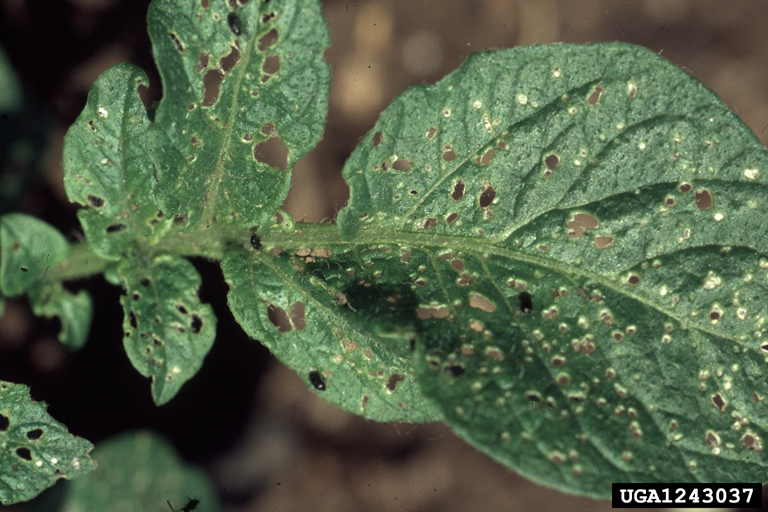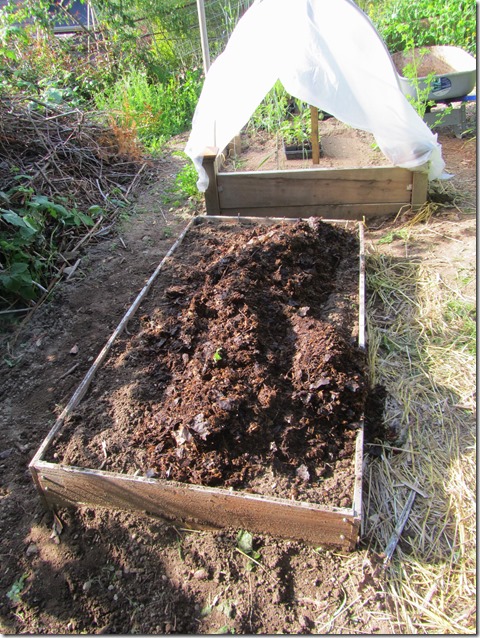Growing fruits and vegetables is a challenging business – not only when pushing the boundaries of your climate zone, but even when growing the most mundane of crops. This year, the weather has been quite favorable, but I learnt more about insect, fungal, and bacterial diseases than I would have liked.
It’s always frustrating to see a plant struggle or die, that you have been lovingly tending for weeks and months. But, difficult as it may be, you simply have to chalk it up as a learning experience and move on. I’ll admit that I am still struggling to develop the proper gardening equanimity. Here are some of the things I learnt this spring.
Peach Leaf Curl

Peach Leaf Curl is a fungal disease. Spores infect the buds of new growth – by the time you see the typical red patches and deformed leaves it’s already too late. Infection and growth of the fungus is promoted by cool moist weather – almost all peach trees in the PNW suffer from this disease.
On the bright side, while it weakens the tree it will not kill it. Remove all infected material as soon as possible to prevent spore formation and re-infection; keep the tree well watered and fertilized to help it recover; prune to allow more light and air penetration.
Plum Leaf Curl

Despite the similar names, this is very different from Peach Leaf Curl. Plum Leaf Curl is caused by aphids. They attack the new growth causing it to curl and shrivel.
Unlike fungal diseases, aphids can be combated by encouraging their natural predators, e.g. Ladybugs. Of course, that means allowing the pest population to grow until the predator population ramps up to match it.
Physical measures such as soap spray or removing affected leaves will slow the aphids down, but aren’t sufficient to eliminate them.
Black Spot

Pear trees – and apples to a lesser extent – are afflicted by fungal black spot disease. Left unchecked, it can defoliate the tree. The best way of dealing with this is removing affected leaves as early as possible to limit the spread.
Cedar Rust

Cedar rust is another fungal disease common in the PNW. Its host plants are cedar and juniper. Since these are ubiquitous, you have to accept that susceptible varieties of apple and pear will be affected every year. Manual removal of affected material is again your best bet for limiting the spread of the disease.
Flea Beetles

Flea beetles were unusually bad this year, particularly on our potatoes. Generally we’ll just see a few holes in the leaves which don’t impact the plants significantly. This year, plants are seriously weakened and stunted.
Natural predators like the Soldier Beetle are your ally. Additionally, you can disrupt the soil-dwelling larval stage by cultivating around the affected or susceptible plants. Floating row cover can also prevent or limit Flea Beetle damage.
Cane Borers


Cane borers drill holes in the branches of fruiting currants to deposit their eggs. The hatching larvae eat the soft tissue inside the cane, causing it to break.
Look for small holes ringed by debris. Remove those canes to prevent spreading. Floating row cover can prevent the adult cane borer fly from laying its eggs.
Spotted Wing Drosophila (SWD)


SWD, a type of fruit fly, only recently arrived on the scene. It was first detected in Washington around 2010. There has been little time to study its behavior and life cycle, and to identify effective management strategies. Unfortunately, it looks like it is here to stay and will pose a major headache:
- Wild blackberries provide unlimited habitat to SWD
- SWD infests many kinds of soft-skinned fruit and berries. This includes: cherries, pie cherries, raspberries, blackberries, blueberries, strawberries, mulberries, peaches, figs, grapes, kiwi, plums
- Unlike other types of fruit flies which only lay their eggs in damaged or overripe fruit, SWD infests unripe fruit.
- SWD is prolific: each female can lay several hundred eggs; and there are multiple generations in a single growing season
What can you do? At this time, physical control is the best option. Completely enclose the fruit or plant in fine mesh, e.g. pantyhose, paint strainer, or organza fabric. The tricky part is to wait until after pollination, but before SWD is active – that is a short window of time.
On the bright side, SWD infested fruit is not toxic. If infestation is not too severe, you may still want to use the fruit for juice, jam, etc.














